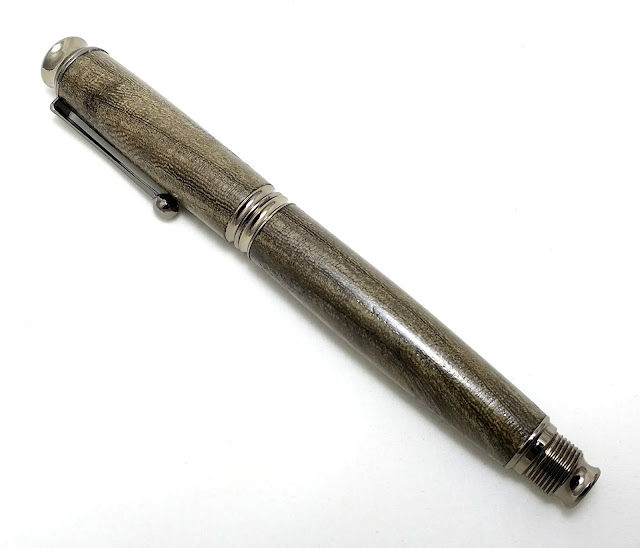NB Dane Elm and Gun Metal Premium Twist Pen
(A donation from the sale of this pen will be gifted to The Narrowboat Heritage Foundation, the Custodians of NB Dane)
EUROPEAN ELM - Ulmus procera
European Elm has is a light to medium brown, sometimes with a hint of red. With an oil finish, it can turn a beautiful golden brown colour. Unless, of course, it's been kept at the bottom of a canal for an awfully long time.
The rotten parts of these rebuilt boats are usually used to stoke the fires that steam the new planks for bending to the hull's shape.Luckily these pieces of elm were too important to burn and have been properly stored. I wasn't sure how deep the rot would have gone and how deep I would have to delve into this piece to find stable wood. The pens I make from historic boat materials have been thoroughly tested by me to make sure that they will give pleasurable daily use.
Narrowboat Dane was built by the Mersey Weaver and Ship Canal Carrying Company and used as part of their fleet. She was built in November 1946 and first registered on January the first 1947. Ade from A P Boatbuilding is currently restoring her on behalf of The Narrowboat Heritage Foundation, the work being done is re-bottomed with new chine planks, kelson, stem post and soon to receive two new bow planks, gunwales, decks, new back cabin and engine room. The pens that I will be making from Dane are all from a heavy lump of Elm bottom plate and a replaced side plank made of oak.
Pen #872 was turned on 19th September 2017 at Whittington on the Coventry Canal.
You can follow my pen making here on this blog and our travels on another blog here
oh and please like us on Facebook too here
https://www.facebook.com/ThePenMakersBoat
https://www.facebook.com/ThePenMakersBoat












































